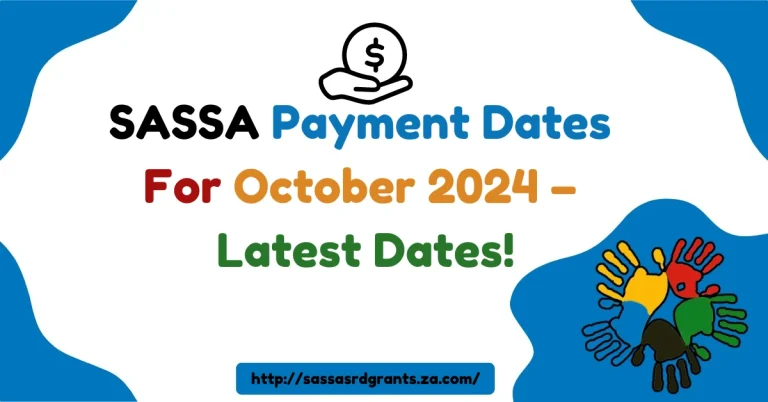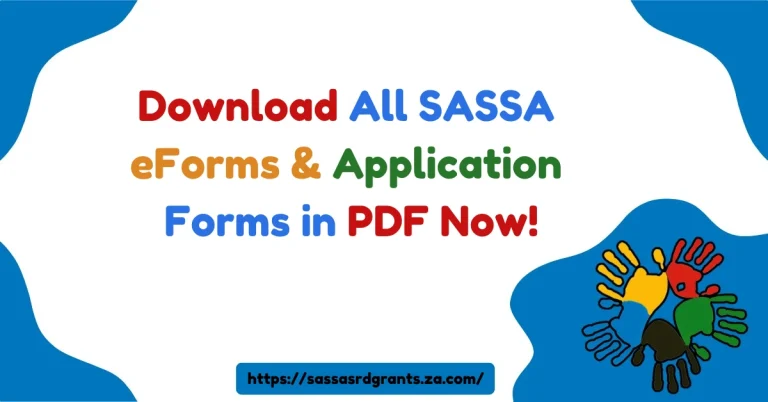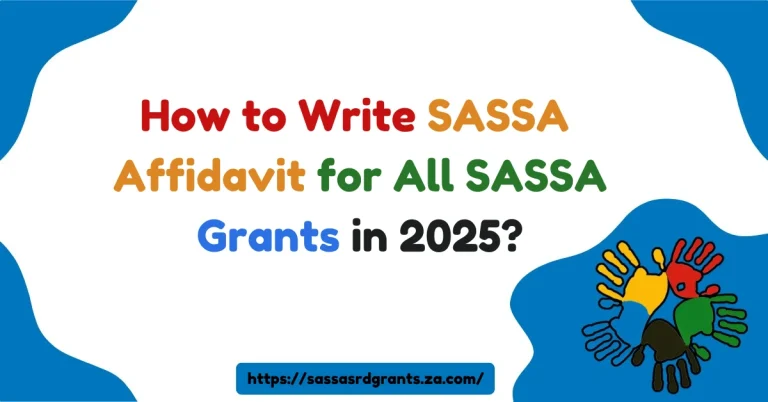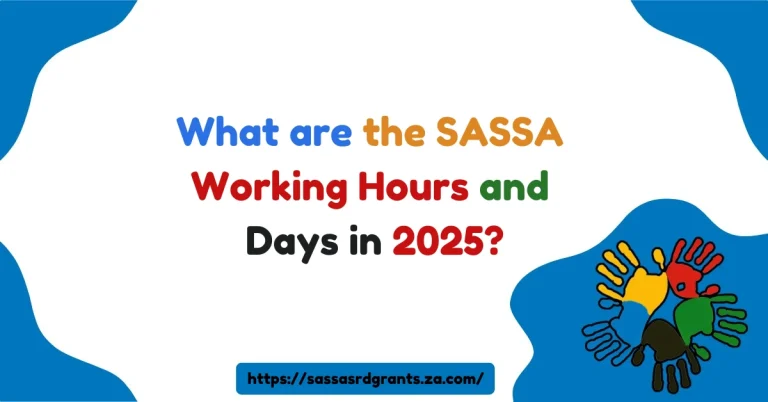SASSA Means Test Calculator [2025]
Have you ever sat down wondering whether you could qualify for a SASSA grant? I know how confusing and overwhelming it can feel — especially when you’re not sure where to begin. That’s exactly why I’ve written this guide, to help you break through the confusion. The SASSA Means Test Calculator is one of the simplest ways to check if your income and assets meet the requirements for any grant in South Africa.
In this guide, I’ll walk you through exactly how the SASSA Means Test works, how to use the calculator, what counts as income and assets, and the exact limits you need to know for 2025. Whether you’re applying for an Old Age Grant, Disability Grant, Child Support, or another form of assistance — this article will cover it all.
SASSA Means Test Calculator [2025](Quick Answer)
The SASSA Means Test Calculator helps you check if your income and assets qualify for a SASSA grant in 2025. It’s easy — select your grant type, enter your income, and the tool shows your eligibility instantly. Staying below the income and asset limits is crucial, as even a small difference can lead to rejection. Limits update twice yearly, so always check the latest figures before applying for financial assistance.
What is the SASSA Means Test Calculator?
The SASSA Means Test Calculator is a powerful but simple tool designed to help you figure out if you meet the financial conditions to receive a SASSA grant. When you apply for any SASSA benefit, your income and assets are assessed to ensure only those who truly need financial help can qualify.
Using the calculator removes the guesswork. You’ll know within minutes whether your personal or household finances meet the rules set by SASSA.
How to Use the SASSA Means Test Calculator
Using the SASSA Means Test Calculator is incredibly easy. Whether you’re single, married, working, retired, or self-employed — the tool is built to guide you step by step.
Here’s how you can check your eligibility:
- Select Your Grant Type
Choose the grant you want to apply for:
- Old Age Grant
- Disability Grant
- Child Support Grant
- War Veterans Grant
- Foster Child Grant
- Care Dependency Grant
- Social Relief of Distress (SRD) Grant
- Input Your Income
If you are single, enter your total monthly income. If you are married, you will need to input your combined household income (that’s your earnings plus your spouse’s). - Click Check Eligibility
Once you’ve entered your details, the calculator will instantly tell you whether you fall below the financial limits for that specific grant.
Using this tool will save you both time and stress when applying for your SASSA grant.
Understanding the SASSA Means Test
Before you apply for any grant, it’s important to understand what the SASSA Means Test really checks. The aim is simple: to ensure government grants go only to people who genuinely cannot financially support themselves.
The means test looks at your financial life in detail, including:
- Total income (monthly or annual earnings)
- Assets (property, investments, bank savings, etc.)
- Debts and dependents (outstanding loans and family size)
For married couples, SASSA will look at the combined income and assets of both spouses.
What Counts as Income?
When you apply for a SASSA grant, your income isn’t limited to just your salary. The agency considers multiple sources of earnings, including:
- Monthly salaries or wages from jobs
- Pension payouts from retirement funds
- Income from business ownership or self-employment
- Rental income from properties you own
- Child maintenance payments
- UIF payouts (Unemployment Insurance Fund)
It’s important to be honest and accurate when reporting your income, as this data will directly affect whether you qualify.
What Counts as Assets?
Your assets are just as important as your income when it comes to the SASSA Means Test. These include:
- Bank balances (savings and checking accounts)
- Properties (land and additional houses — your primary home is usually excluded)
- Investments (stocks, bonds, or shares)
- Retirement annuities or long-term savings policies
For applicants of the Old Age Grant or the Disability Grant, the home you live in is typically not counted as an asset, which can significantly improve your chances of qualifying.
SASSA Income and Asset Limits for 2025
Each year, SASSA adjusts the income and asset thresholds to keep up with inflation and policy changes. These limits determine whether your financial situation makes you eligible for a grant.
For 2025, here’s what you need to know:
Old Age, Disability, and War Veterans Grants
- Single applicants: Your monthly income must not exceed R8,070.
- Married couples: The combined monthly income must be below R16,140.
Child Support Grant
- Single caregivers: Must earn R5,000 or less per month.
- Married caregivers: Combined household income must not exceed R10,000 per month.
Foster Child Grant
No means test is applied for this grant, as it is intended to support children placed in foster care by court order, regardless of household income.
SASSA Grant Amounts for 2025
Here are the expected SASSA grant payment amounts as of April 2025 (note these may increase again in October 2025):
| Grant Type | Amount (April 2025) |
|---|---|
| Old-Age Grant (60-74 years) | R2,190 |
| Old-Age Grant (75+ years) | R2,210 |
| Disability Grant | R2,190 |
| Care Dependency Grant | R2,190 |
| War Veterans Grant | R2,210 |
| Child Support Grant | R530 |
| Foster Child Grant | R1,180 |
| Social Relief of Distress | R370 |
Why the Means Test Matters
The SASSA Means Test prevents people who are financially secure from taking resources meant for those who truly need them. If you exceed the income limit or hold too many assets, your grant application will unfortunately be declined.
This is why using the SASSA Means Test Calculator before you apply can save you disappointment, by confirming your eligibility in advance.
Common Mistakes When Applying for a SASSA Grant
Many applicants make avoidable mistakes that lead to their applications being rejected. Here are some things you should double-check:
- Not calculating combined income if you are married.
- Forgetting to declare rental income or pension payouts.
- Assuming your assets won’t be counted.
- Relying on outdated income limits (these are adjusted every April and October).
Why Staying Below the Threshold is Critical
Even a few extra Rands can lead to an automatic denial. SASSA uses strict financial cutoffs — there are no exceptions or rounding off. If your income or assets are even slightly above the limit, you will not qualify for the grant.
When Are the Limits Updated?
The income and asset limits for all grants are reviewed twice a year, typically in:
- April (first adjustment of the year)
- October (second adjustment for inflation)
You should always check the most recent numbers before submitting your application to avoid surprises.
Frequently Asked Question(FAQ’s)
Q: What is the SASSA Means Test?
A: The SASSA Means Test is a financial screening process used to determine if your income and assets fall below the required limits for grant eligibility.
Q: Who has to do the means test?
A: Almost everyone applying for a SASSA grant must pass the means test, except applicants for the Foster Child Grant.
Q: How often do the income and asset limits change?
A: Limits are updated twice a year — once in April and again in October.
Q: What counts as income when applying for a SASSA grant?
A: Income includes:
- Salaries
- Pension payments
- Rental earnings
- Business income
- Child maintenance
- UIF payouts
Q: What happens if I exceed the income or asset limits
A: If you exceed the SASSA means test limits, your application will be rejected, regardless of your personal circumstances.
Final Thoughts
The SASSA Means Test Calculator is a free and effective way to check whether your income and assets fit within the qualifying range for a SASSA grant in 2025. Always remember that the government updates the limits every April and October, so staying informed is your best defense against missed opportunities.
If you’re applying soon, make sure you calculate your income correctly and use the SASSA calculator before you submit anything. Doing this will increase your chances of receiving the financial help you need.
For the latest updates, check the official SASSA website here.
![SASSA Means Test Calculator [2025]](https://sassasrdgrants.za.com/wp-content/uploads/2025/04/How-to-Register-for-SASSA-R370-Grant-on-WhatsApp-71.webp)
![SASSA Payment Dates for November 2025[Confirmed Dates]](https://sassasrdgrants.za.com/wp-content/uploads/2025/04/How-to-Register-for-SASSA-R370-Grant-on-WhatsApp-72-768x402.webp)




